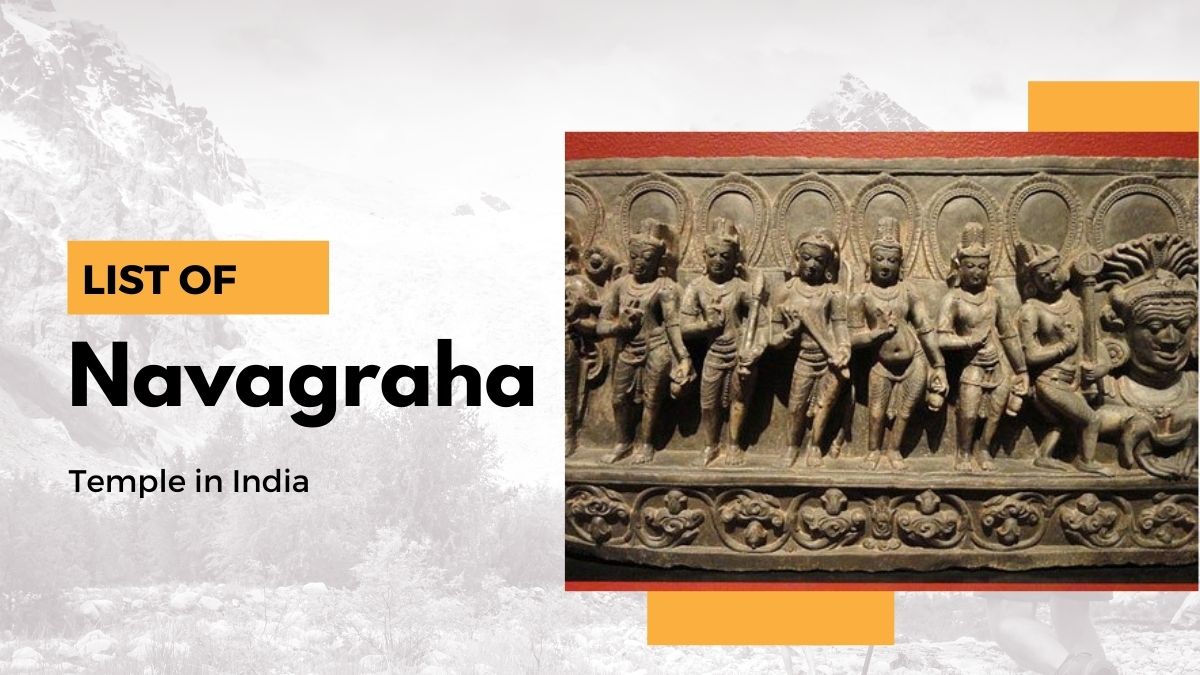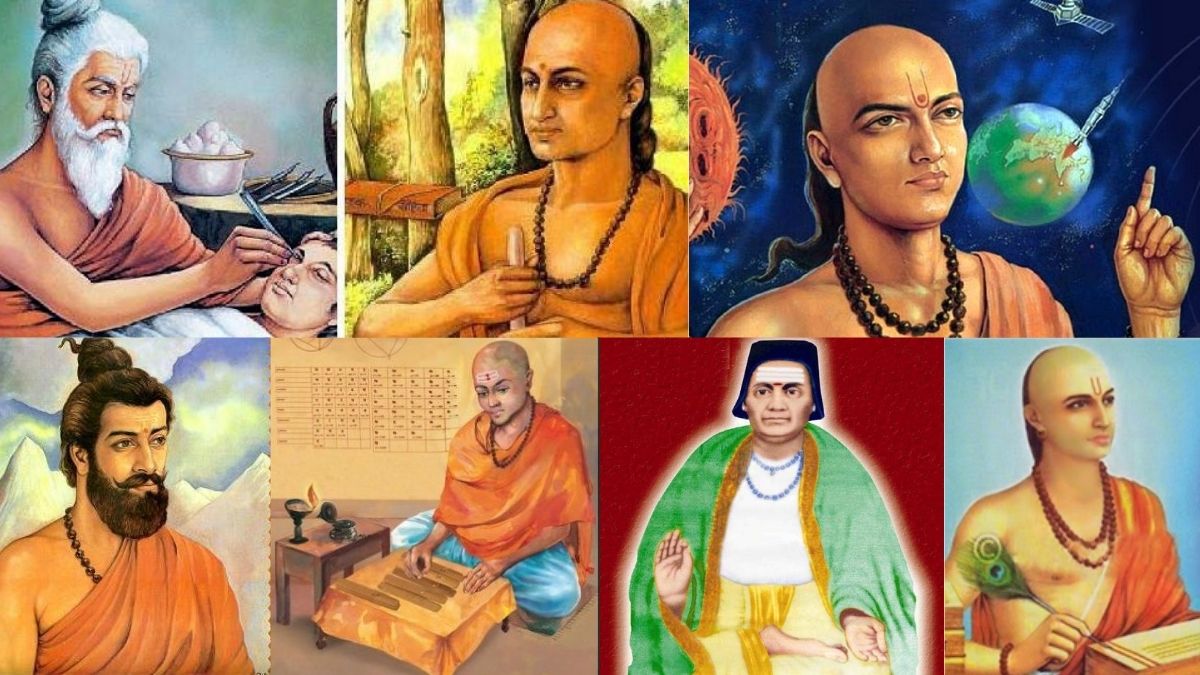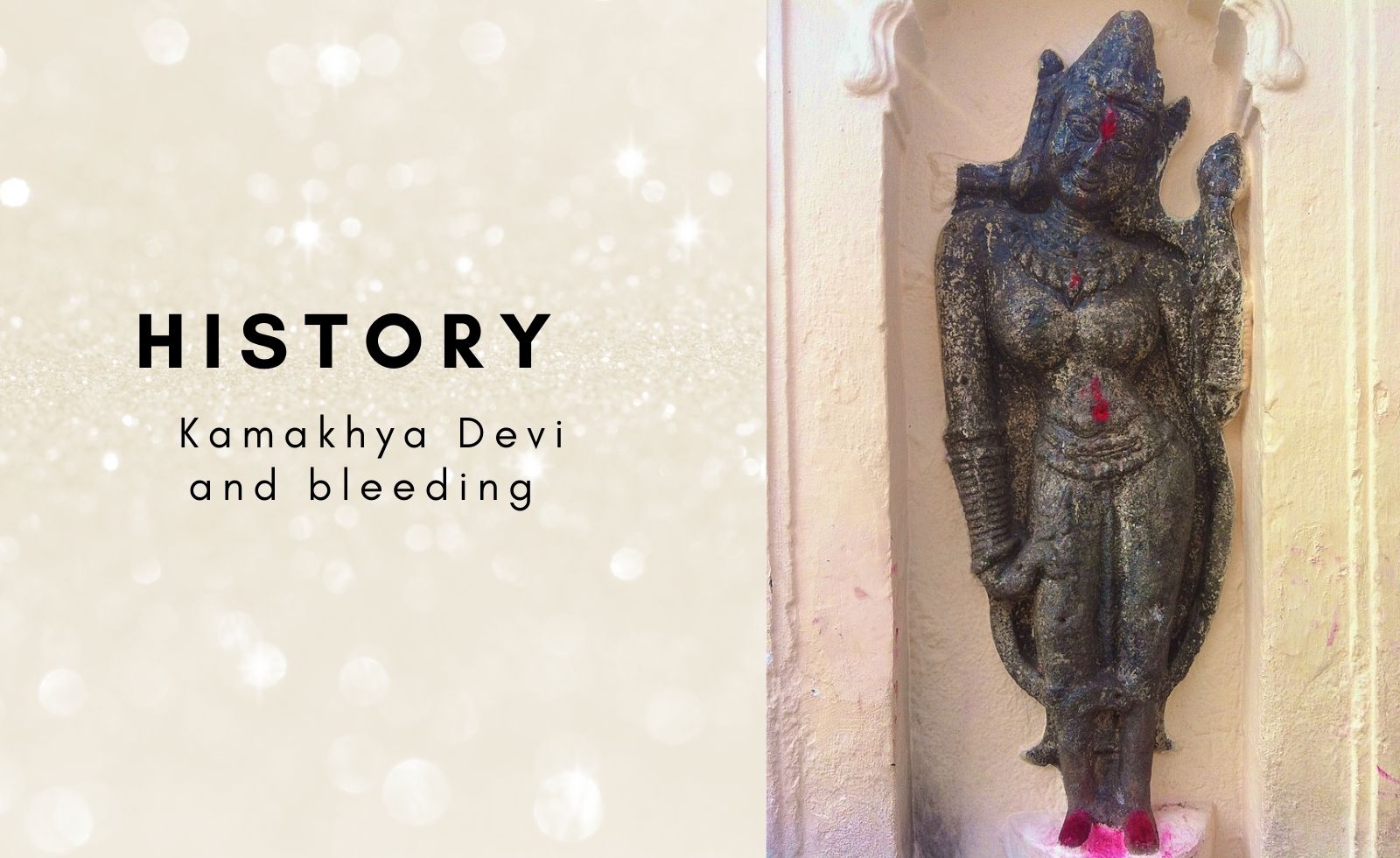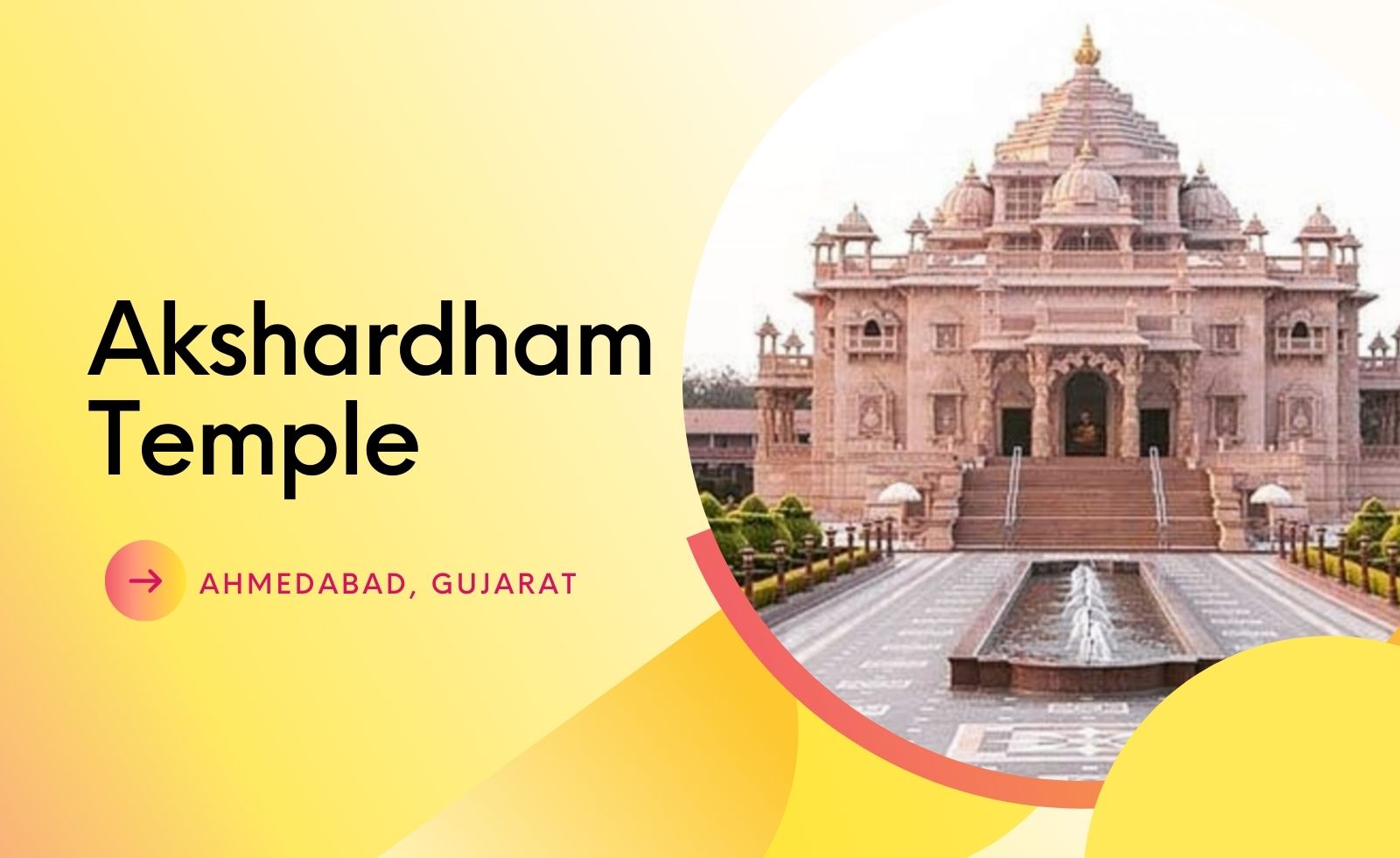
The Akshardham temple in Ahmedabad is one of the most beautiful and relaxing places to visit in the city. it is a serene, peaceful and yet lively to experience. This article not only introduces you to the place but also acts as a guide to prepare you for your visit and tells you what not to miss. The various sites within the temple have been discussed here along with the religious connotations that it might have. In addition to that, all other relevant details regarding the place like how to get there, what to do when you get there and what to look for have all be presented in the piece. So take your time and know everything there is to learn about this immensely beautiful heritage site.
The meaning of Akshardham is the divine abode of God. Located in Gandhinagar, Gujarat, this is the largest Hindu temple built on the values of Yogiji Maharaj (1892-1971), the fourth successor of Swaminarayan. Created fondly by Pramukh Swami Maharaj (1921-2016), the fifth spiritual successor of Swaminarayan, this amazing complex is entirely made of pink sandstone shipped from Rajasthan and took over 13 years to build.
This beautiful edifice enshrines the vibrant Hindu traditions and echoes with spirituality. This temple features 97 carved pillars, 17 domes, 8 balconies, 220 stone beams, and 264 sculptures. Built devoid of any steel or iron as per the ancient Vedic scriptures, this temple offers peace of mind and tranquillity to all its visitors.
The temple is run by the trust: Bochasanwasi Akshar Purushottam Swaminarayan Sanstha. The trust in 1905 by Shastriji Maharaj following his conviction that the pious Swami Narayan always remained on earth amongst his devotes and created a lineage of gurus starting from Gunatitanand Swami.
This beautifully carved temple is further divided into 3 major sections, the Garbhagruh, the Swaminarayan darshan, and the Prasadi Mandapam.
The Garbhagruh
The Garbhagruha is the sanctum sanctorum of the temple and is home to Sri Bhagwan Swaminarayan and his successors. They are considered the manifestations of the Aksharbrahma himself, teach saintliness and devotion, and eternally offer their service and worship to Bhagwan Swaminarayan. Along with their statues, special altars are also devoted to other Hindu gods like Shri Sita-Ram, Shri Radha-Krishna, Shri Lakshmi-Narayan, and Shri Parvati-Mahadev.

The Garbhagruh is free and open to all. The timings of this place are from 11 am to 7:30 pm. It takes 20 minutes to see this beautiful place.
Swami Narayan Darshan
Bhagwan Swaminarayan was a great social reformer who guided people to the light. He contributed immensely to the abolition of vice and superstition. He preached equality and stood up for women’s rights when it was an alien concept. He stopped female infanticide and empowered women with education. He forbade violent sacrifices, including the practice of Sati. He uplifted the people by teaching them about faith, spirituality, virtue and integrity.

Millions of people recognize him as the manifestation of Parabrahma Parmatma – the supreme God himself. The Swami Narayan darshan is where his divine life can be experienced through paintings. It is free and open to all. It takes 20 minutes to relive his life and imbibe his values. The timings of this place are from 11 am to 7 pm.
Prasadi Mandapam
Bhagwan Swaminarayan is a highly worshipped spiritual deity, and his principles are ardently followed even to this day. The prasadi mandapam is present in the basement of this complex and holds the carefully preserved articles that he used in his lifetime. These holy relics are priceless and harbour immense spiritual power. They are displayed to show future generations the testimony of Bhagwan Swami Narayan’s incarnation on earth.

This place is free and open to all. The timings of this place are from 10 am to 7:30 pm, and aarti timings are from 10:00 am and 6:30 pm. It takes 20 minutes to see this area within the temple.
The Abhishek Mandapam is where visitors and devotees can directly take part in performing the Abhishek ritual. After visiting the main temple and experiencing the spiritual powers of the venerable Swami Narayan, one should visit this place to pray and fulfil their personal wishes.
Abhishek Mandapam
In this hall, the iconic murthi of Neelkant varni is placed. Visitors can perform the Abhishek – bathing the murti with sanctified water. While performing this ritual, visitors are encouraged to pray for their personal wishes. Pramukh Swami Maharaj, the sixth spiritual successor, consecrated this murthi, a youthful yogic form of Bhagwan Swami Narayana. The Abhishek is open to one and all and can be performed for a small fee of 50 INR. The Abhishek ritual starts with tying a sacred thread on the wrist. Then Sanskrit shlokas are chanted, each devotee bathing the holy idol with sanctified water from a small pot.
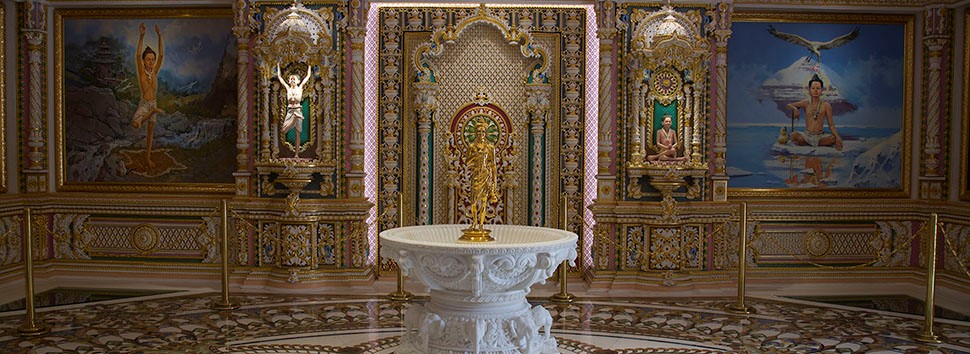
The timings of this place are from 10:30 am to 7:30 pm, and the ritual takes around 15 minutes to perform. Before entering and performing this ritual, make sure to wash hands and maintain silence during the ritual.
After the rituals, visitors usually visit the exhibition halls to feast on one’s eyes. Carefully crafted dioramas showcase and explain the various aspects of the Hindu religion and culture. This temple uses the latest technology to create a vivid impression of the great Swami Narayan’s life.
Exhibition Halls
There are 5 large halls where the exhibitions are displayed. They use audiovisual presentations and dioramas to explain the various tenets of Hinduism and Swami Narayan’s life, work and teaching. The Neelkanth and Sahajannd Halls are dedicated to Swami Narayan’s life. The places where he took birth and visited on his spiritual journey are all brought to life in these halls.
This temple even boasts having an Imax theatre in its premises in one of its halls. A 40-minute film directed by Keith Melton and narrated by Peter o Toole depicts the life of the venerable Swaminarayan. It shows the various turning points in his spiritual life. Around 45000 actors have acted in the movie, a record in itself. The permanent hall is further divided into three subsections. The first subsection contains the Hindu texts and scriptures, the Upanishads and the epics like the Ramayana and the Mahabharata.
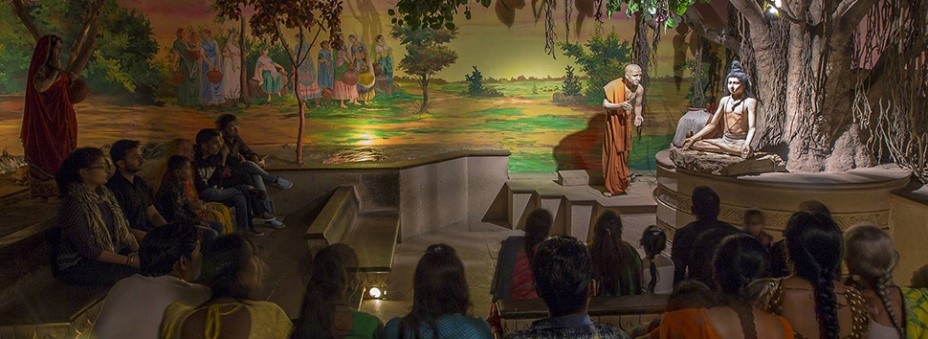
A unique aspect of this temple is the hall of harmony in the second section. Here, all the world’s great religions have been displayed, and the universal message of harmony is clearly showcased. This hall attempts to bring people of different faiths closer together by pointing out the similarity and aspirations of every religion: peace and harmony. The third section pays homage to India’s famous poets.
The Sant param hitakari hosts India’s first-ever audio-animatronic show in the fifth exhibition hall. One can experience Swami’s discourse on spiritual matters as he sheds light on eternal happiness and promotes mindfulness. This entire show can be watched in 15 minutes, with the tickets being free for children below 3 years of age and adult tickets costing 60 INR and children tickets costing 40 INR.
This complex part is open from 10:30 am to 5:30 pm, and the ticket counter closes at 5:30 pm. It takes around 45 minutes to visit each of these halls. There are no food and drinks allowed anywhere within the temple. After this, visitors and devotees alike can stay for some time and enjoy the pleasant garden surrounding this magnificent temple.
Gardens
The Sahajanand Van is located on a 15-acre land having plenty of attractions like rock arrangements, fountains, a waterfall and a plant nursery of 18000 square feet. To add to the beauty of this garden, aesthetically designed sculptures are located throughout this place.
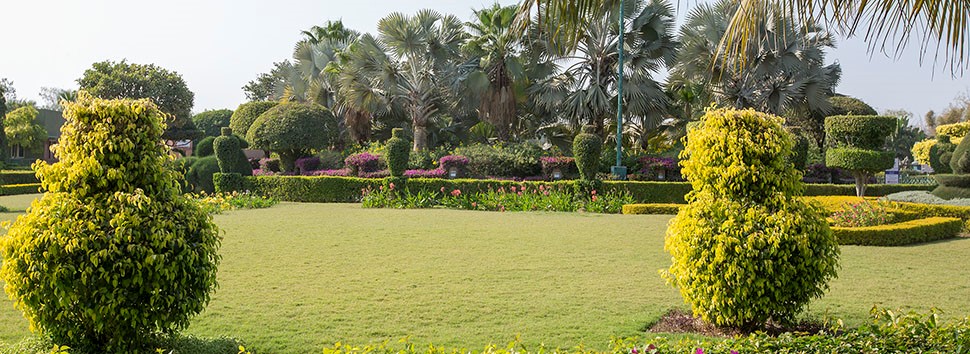
The Sheshshayi captures a peaceful moment between Lord Vishnu and His consort Laxmi Devi as he reclines majestically over sesh nag.
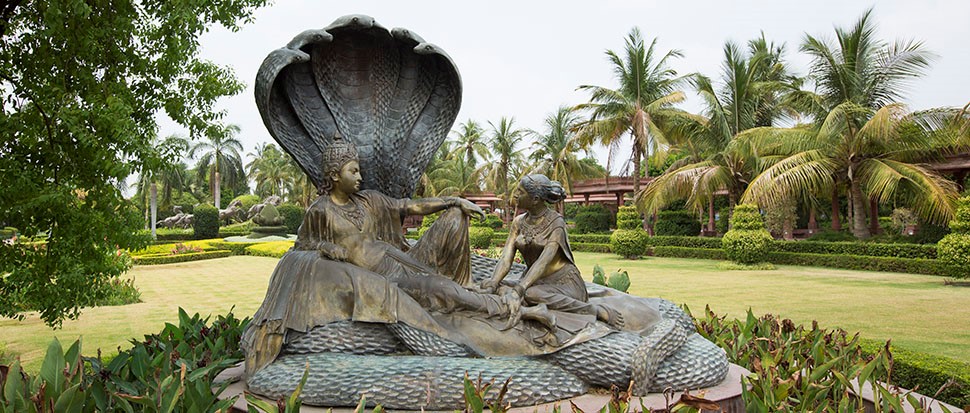
In Hindu culture, homage is paid to the sun god and the moon god to bring life and light to the world. This spirit is captured in the sculptures depicting seven horses hinting that the ancient sages knew that sunlight consisted of seven colours.
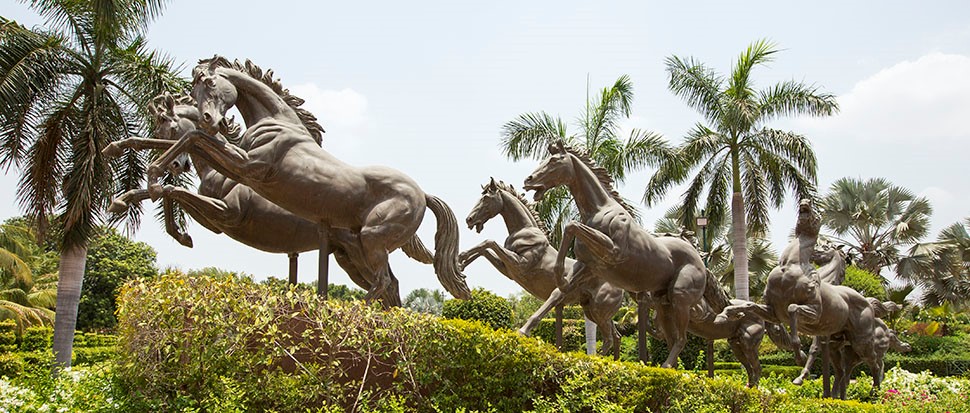
The famous churning of the ocean, the Samudra Manthan, is also showcased in great detail here in the hope that visitors learn the value of nectar and be always grateful for the treasures they have in their life no matter how small they may be.
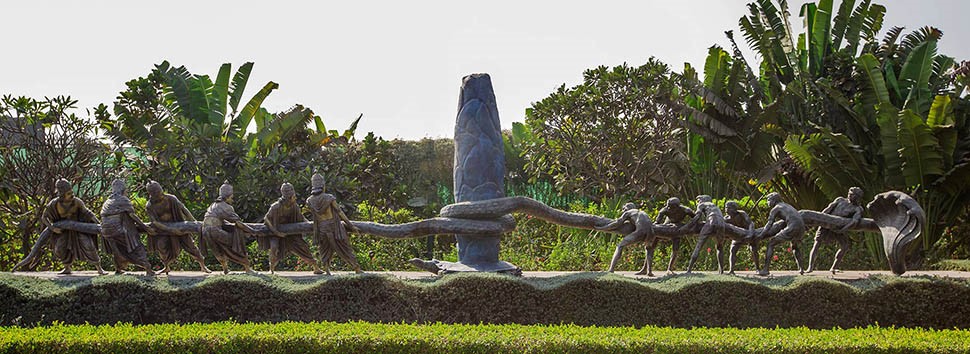
Civilizations have always flourished around river banks not only in India but also globally. By installing beautiful sculptures in honour of river goddesses Ganga, Yamuna, Saraswati and Narmada. The Narmada river flows in Gujarat and is considered sacred by the trust that runs this temple. They use the water of this river to sanctify all their prayers and offerings.
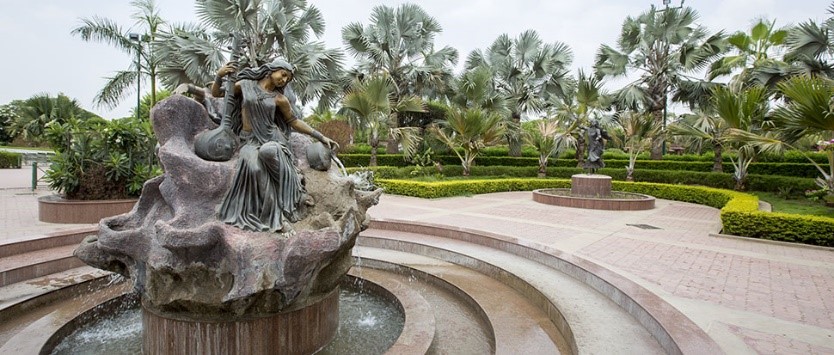
Located in the gardens is the Premvati food court, which offers delicious vegetarian cuisine only. It is hygienic food made with fresh ingredients, and Indian and continental cuisine both are available here. It makes a nice spot for a good lunch.
The garden timings are from 11 am to 7:30 pm, and the entry is absolutely free.
People usually wait till the evening after lunch to watch the spectacular water show. This animated show has a laser, fountain animations, and water-screen projections with lively music as they retell the story of Nachiketa as told in the kathopanishad.
Sat-Chit-Anand Water Show
The water show is a 45-minute mesmerizing presentation that brings Hindu philosophy to life by retelling the story of Nachiketa. The very word sat-chit-anand stands for truth-consciousness-bliss. Nachiketa, a boy of nine, was unhappy with his sage father, rishi Udalak’s offering of sick cattle to the Brahmin attendees. They attended a yagna conducted by him.
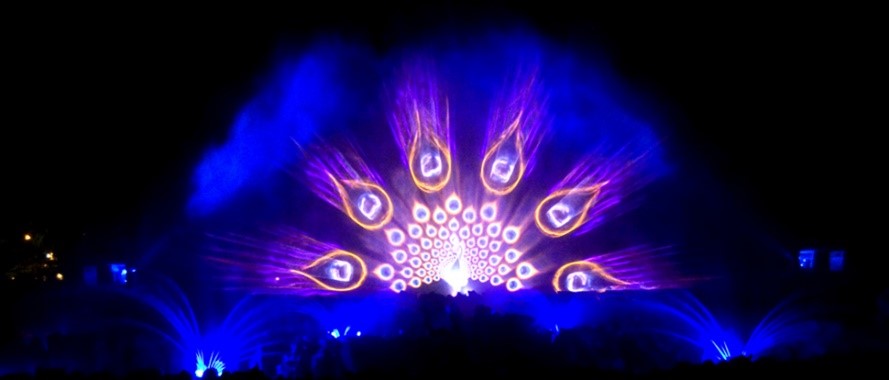
Nachiketa, uncomfortable with his father’s gifts to the Brahmins, questioned whom he would be offered as charity. When his father angrily banishes him to Yama Loka, Nachiketa patiently waits for Yama, the God of death. Impressed by his resolution, Yama grants him 3 boons, which Nachiketa utilizes to gain more knowledge and transcend death itself.
This beautiful retelling highlights the value of one’s principles, perseverance during difficult times and staying true to oneself under any circumstance.
The first show starts after sunset, and multiple shows are performed in one night. Adult tickets cost 100 INR, children tickets cost 70 INR, and kids below 3 years are free.
This beautiful temple promotes peace, harmony and spirituality. It uses the latest technology to highlight ancient Hindu scriptures and texts, showing the people how modern technology can be used for the betterment of mankind. Visiting the temple and its dress codes are discussed in detail in the coming paragraphs.
How to reach the Akshardham temple and other important details
This temple is very famous and is located only 30 minutes away from the Ahmedabad airport and 45 minutes away from the Ahmedabad railway station. There is a parking facility as well.
All electronic items, including mobile phones, are banned. And wheelchairs are available for free for the physically challenged, elderly and the needy.
There is a dress code to be observed while visiting the temple. The upper wear should cover the shoulders, chest, navel and upper arms. The lower wear should be below knee length. Suppose one’s dress doesn’t comply with the rules. In that case, sarongs are offered to cover the body for a deposit of 200 INR, which is refundable at the exit when done with the visit.
Entry to the temple is absolutely free and requires no appointments. The Abhishek, the exhibitions hall, and the water show tickets need to be purchased.
There is a photo booth with a photographer who will click a picture with the temple in the background. An entire section of a walkway is dedicated to this.
Akshardham temple also hosts a book and souvenir shop where visitors can purchase beautiful souvenirs to remind them of the trip.
Distance between temple in Gandhinagar and Ahmedabad
One can travel easily from Ahmedabad to Gandhinagar, as Gandhinagar is a mere 30 km away via National highway 147.
The timeline of this temple
In 1970 the great Yogiji Maharaj proclaimed that a beautiful temple would stand under the banyan tree to uphold spiritual values and bring about peace and harmony. Through this great sage’s vision, the famous Akshardham temple was built at that very place.
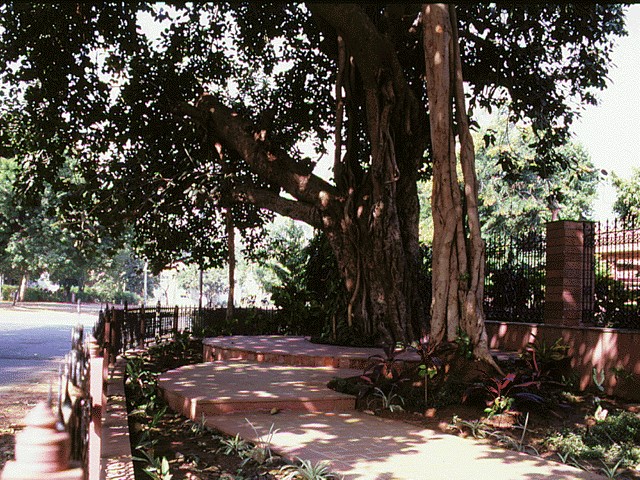
In 1978 a modern design of the temple was selected. The land was acquired, and so was cement and concrete. But then they decided to use traditional architecture and pink sandstone so that this temple could stand the test of time and last for thousands of years instead of hundreds of years if it were built of cement and concrete.
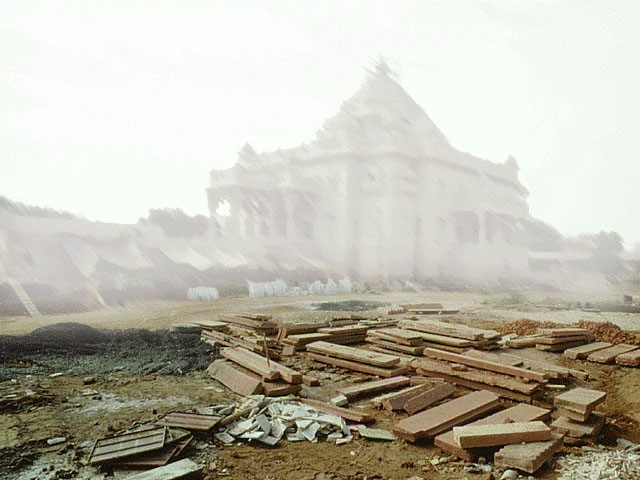
In 1985 the outer stone tower was ready, but the interiors were yet to be designed. So, in 1986 a team of 6 saints visited different countries and researched the sculpture and technology over there. In 4 months, they gained as much knowledge as possible by meeting curators of different museums and exhibitions.
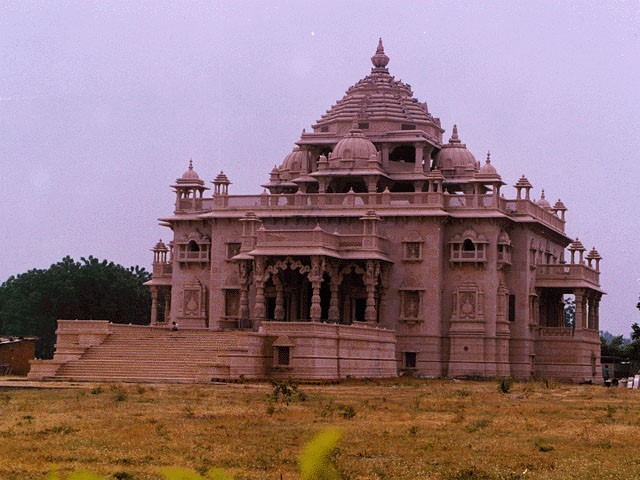
1988 was the year they put all their acquired knowledge into action. They put a lot of thought into designing the temple and fused the best of both worlds. Using ancient architecture, they built the temple with modern technology and machinery.
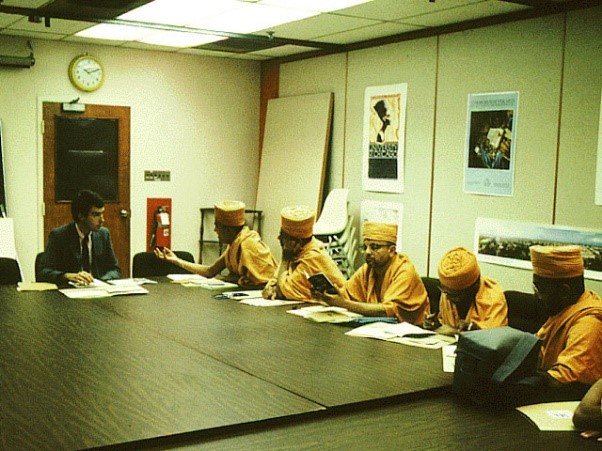
In 1991 a massive workforce came to construct the temple. Day and night, they worked together to make this iconic temple into reality. Lighting, computer systems, furnishing, cladding, everything was installed, and all this took place in 1 year.
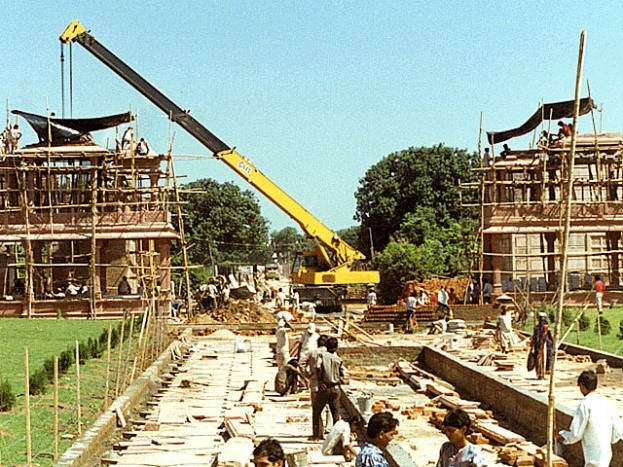
Finally, in 1992, this amazing temple was completed, and on November 2nd, this place was inaugurated open. Thousands of people gathered to watch the temple and marvelled at the peaceful edifice which stood for love, service and sacrifice that honoured Swaminarayan and hailed the Hindu culture. The temple’s motto is to help people or visitors find inner peace whenever they visit the temple.
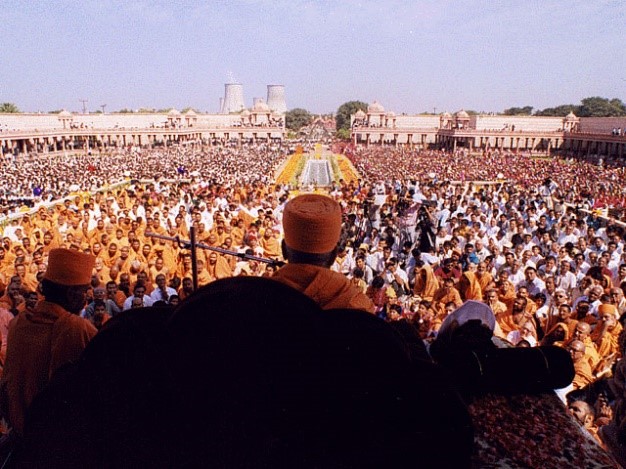
Conclusion
This pink stone marvel is the epitome of Hindu culture and traditions. Built on the values of Swami Narayan as a foundation, this temple focuses on teaching peace, harmony and humility. They are open to all religions, and people of different faiths can come and visit the temple.
Visitors can experience the various facets of the Hindu traditions as they are retold in exciting formats that make use of modern technology, enthralling one and all. Akshardham temple was not built for publicity or show. Rather it was built to teach and unite mankind under universal principles such as love, tolerance, patience and peace.



